Illustrator Stevie Mahardhika is best known for his work for Scholastic NZ, including Row, Kiwi, Row Your Boat and the new picture book Five Little Ducks Went Off to School. Here, he tells us about his typical day and how he approaches a new picture book project.
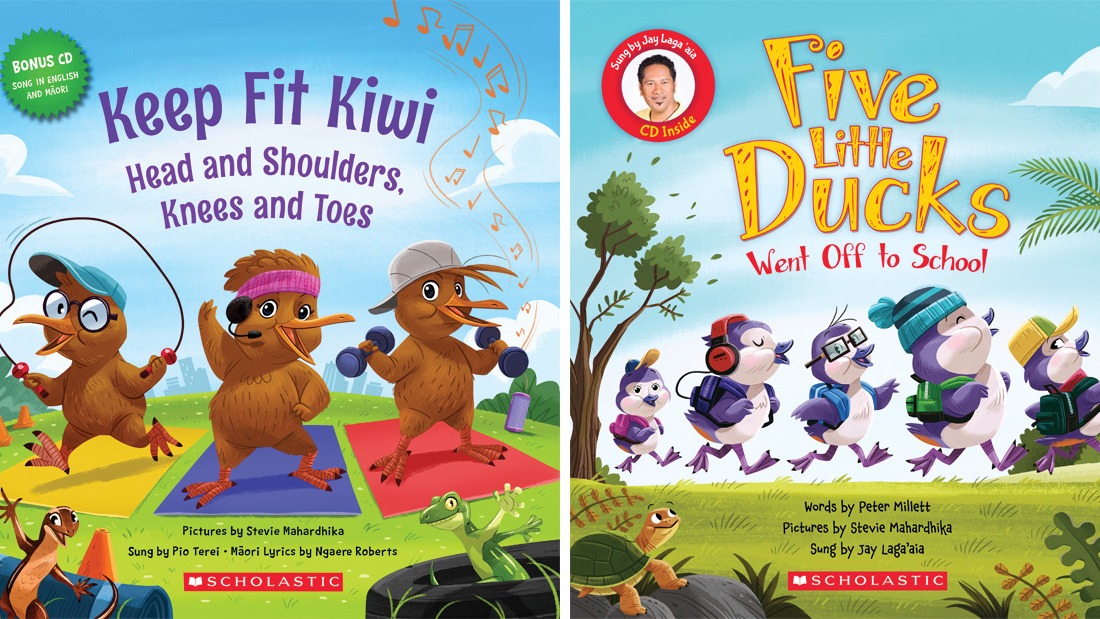
I usually start my day with a warm shower and then have a smoothie for breakfast. These are the most important parts of my morning, as without them I wouldn’t be able to get my head working for the rest of the day. Since I’m not a coffee person, simply brewing some good green tea or Earl Grey is enough.
Then I go to work. While previously I lived in the CBD, with only five minutes’ travel time to work by foot to the Watermark Creative studio, recently my wife and I moved to the suburbs. For now, I’m working on setting up my own studio at home. I try to maintain a 9-to-5 working schedule as well as accommodating the needs of different clients, whether it’s an agency, publisher or self-publisher; sometimes I’ll work up to 7pm when it’s an Australian client.
I find it’s best for me to work for few hours just on one thing to keep the momentum going, rather than trying to do too many things at once. Wrapping myself in my headphones helps me focus on my work, just like horse blinders. Some nice instrumental lo-fi jazzy music is always a good choice when I need to wear my thinking cap. While crafting, sometimes it can be good to listen to an audiobook or podcast. But the perfect music for doing personal projects at night is simply the sound of rain.
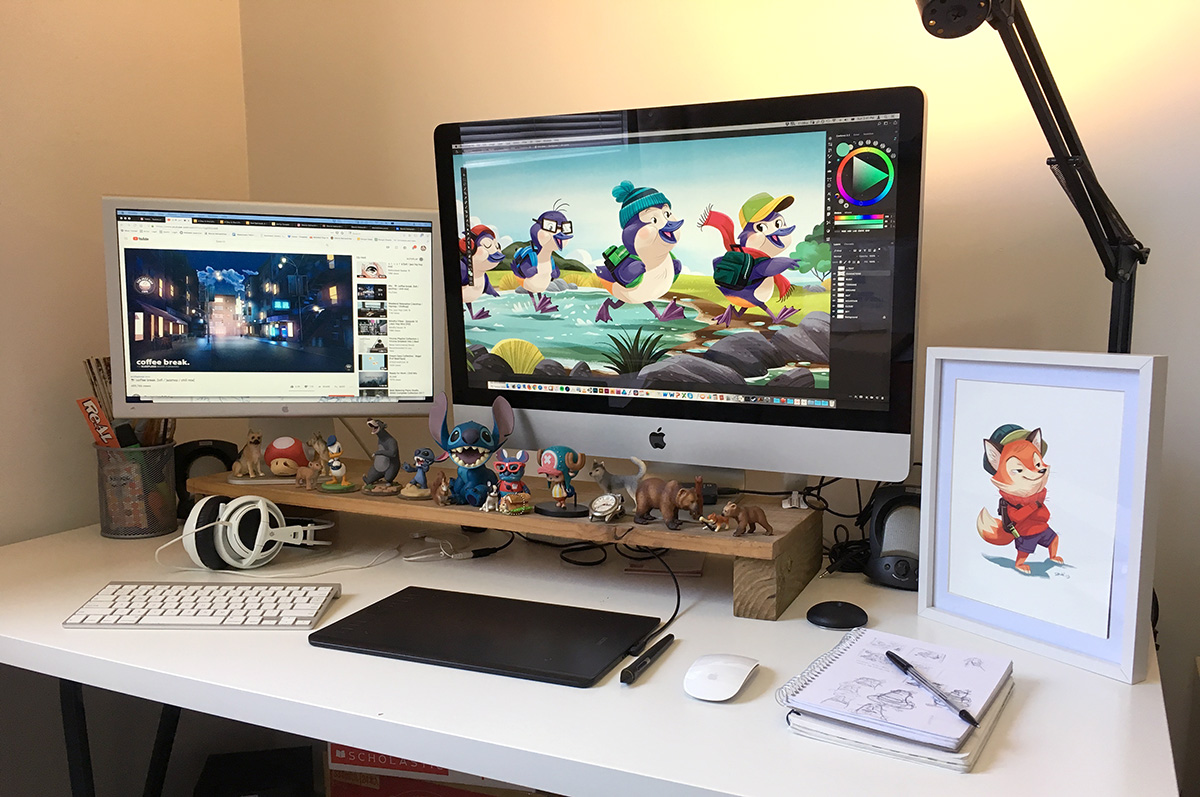
When working on a book the process usually goes through these stages: character development; storyboards/thumbnails; roughs; and final art.
First, I familiarise myself with the brief given from publisher. I read through the whole text to get a good understanding of what is it about and learn about the characters in the book. For Five Little Ducks, which is a sing-along book written by Peter Millet, there are not many specific directions for the characters other than that they need to be NZ blue ducks/whio. I started out with choosing different words to show different personalities of these ducklings (e.g. sweet/shy, bookish, chubby/dreamy, etc). A bit like the seven dwarves from Disney’s Snow White, I guess.
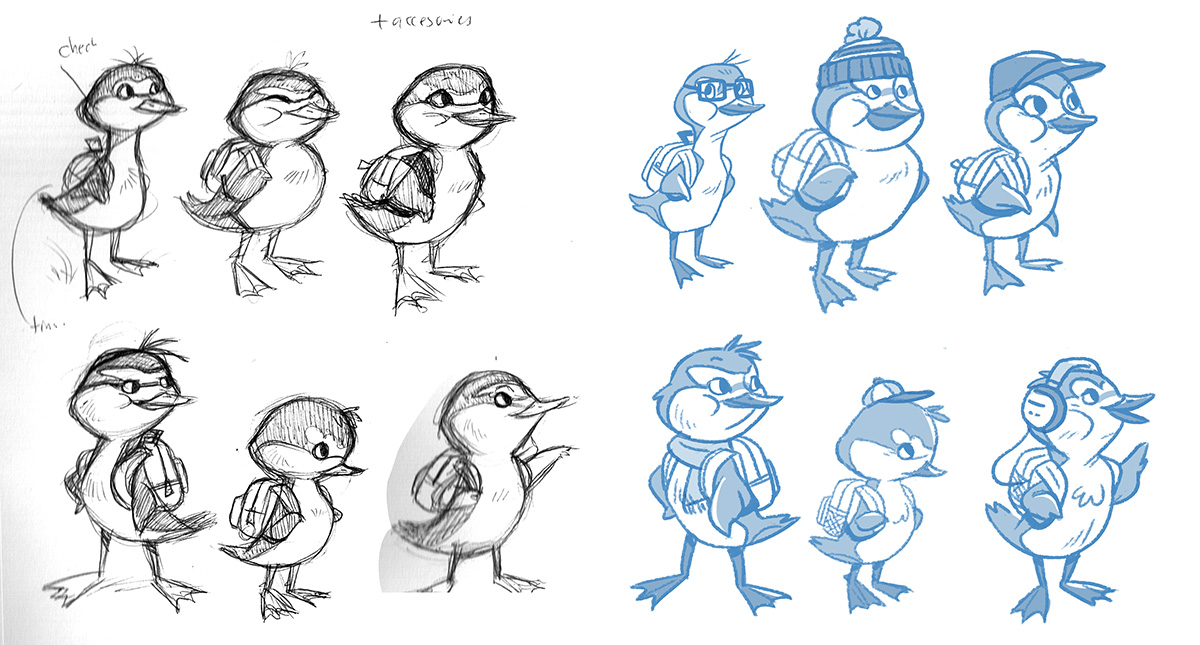
Then I started drawing them up on paper using a ballpoint to roughly explore some of their shapes and the gist of the characters. Afterwards, I scanned the drawings and developed them further digitally, which is also how I worked for the rest of the process. This stage is my one of my favourite parts as I get to see these characters start to come to life.

Once the characters have been fleshed out and finalised (and approved by the publisher) I can move onto storyboarding. For me, this is the stage that takes a lot of thinking, because I’ve got to plan and figure out a lot of things at the same time, like the composition, layout, continuation between pages and so on. This is also the first stage where we can start seeing different characters living in their story and how they interact with each other. As long the drawings clearly tell the story, details are not the most important thing at this stage.
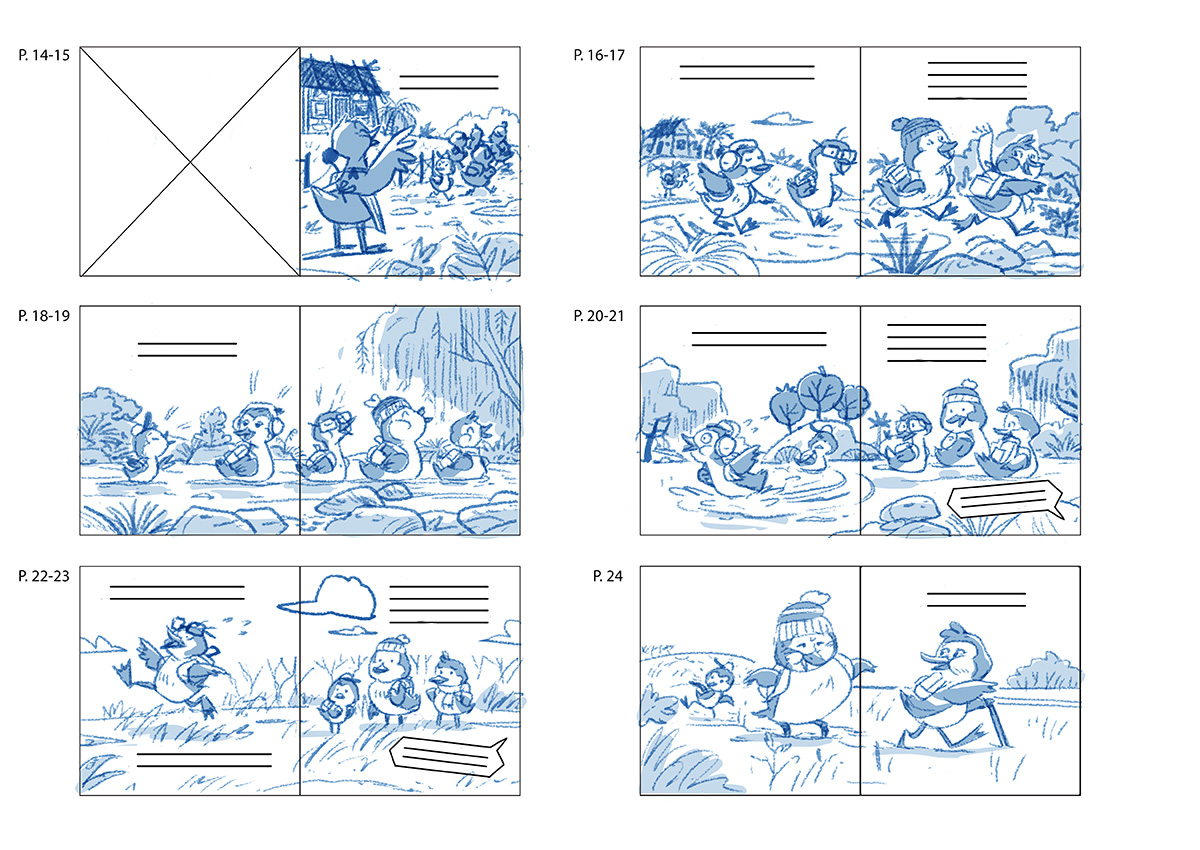
Rough stage is where I develop the scenes further into larger and more detailed drawings. This is when I flesh-out the characters, get their expressions right and add more details on the backgrounds. Also, sometimes some additional fun ideas can come up while doing the roughs. For example, in Five Little Ducks, I felt that it would be nice to have a secondary character that readers can spot on every page. This is where the turtle came in, to add another level of interaction and humour.
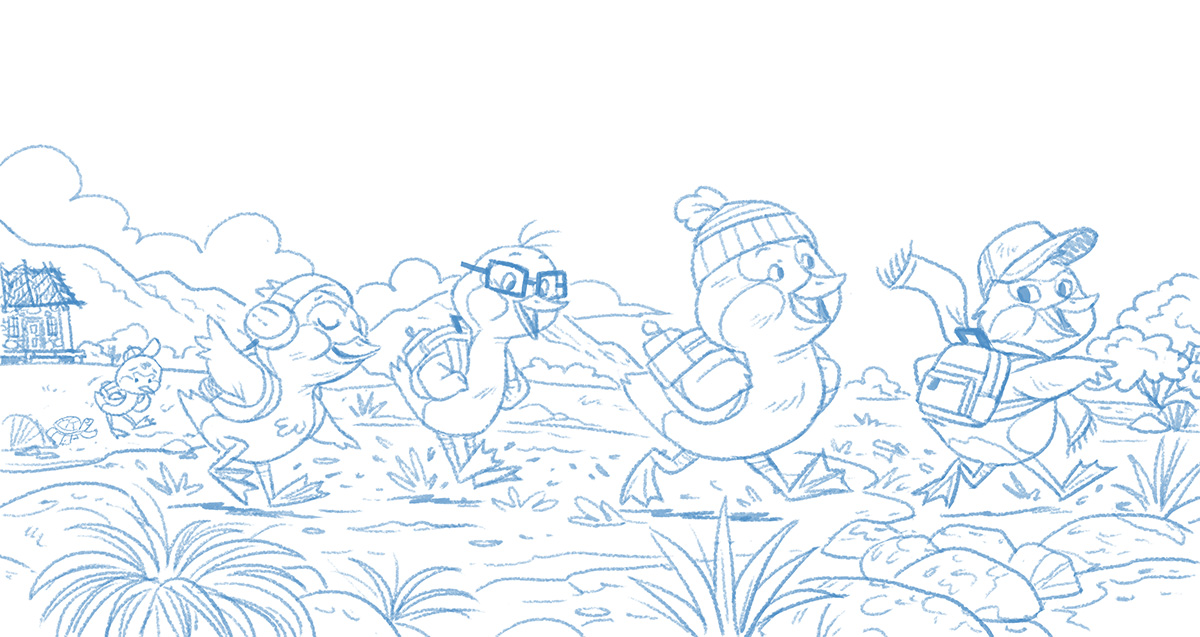
And finally, the final art stage is where I work by adding the colour and craft to make the finished drawings. This stage can be quite time-consuming, because of the amount of characters and number of pages that need to be done. Rather than working page-by-page, I’ve found it less overwhelming and easier for my flow to work on all of the characters first, and the background afterwards. When I was working on Five Little Ducks, for marketing purposes I had to supply the cover and couple of finished spreads early on. Having a few finished pages done first can also help both me and the publisher as to get the overall feel of the book.
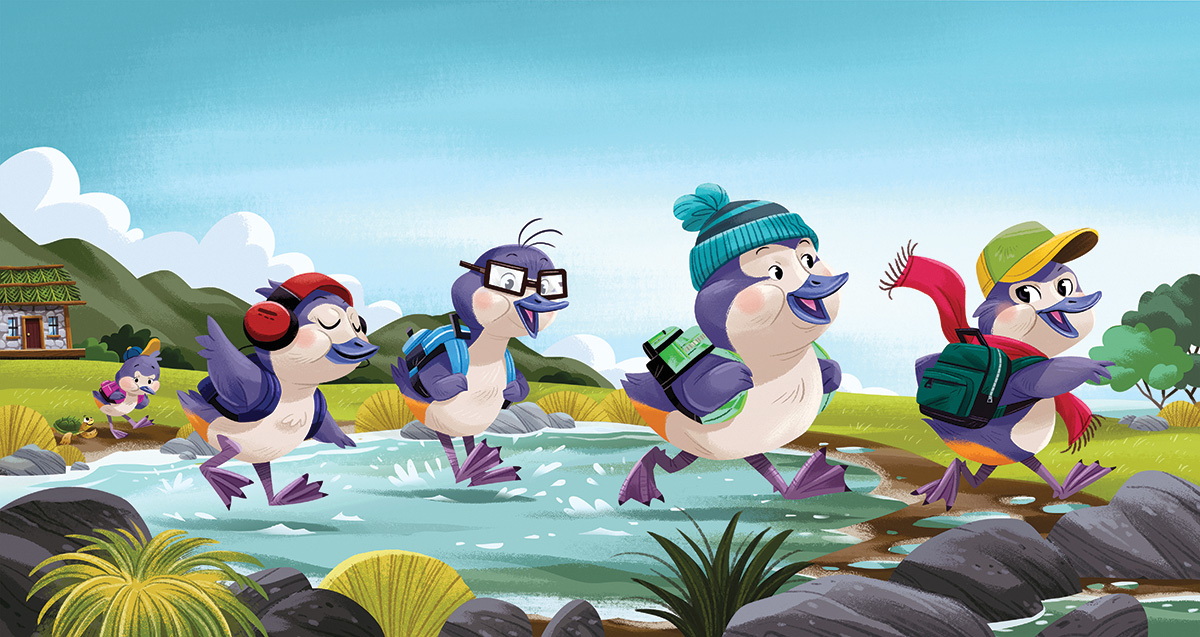
Then it’s off to the publisher, and if I’m lucky there won’t be any revisions needed.
On an ideal day I will also try spending around two hours in the evening, usually after dinner, to do a quick drawing that I can upload to my Instagram account. Whether it’s an art challenge piece or a personal drawing, the idea is just to draw something quick and simple that is not related to work and deadlines.
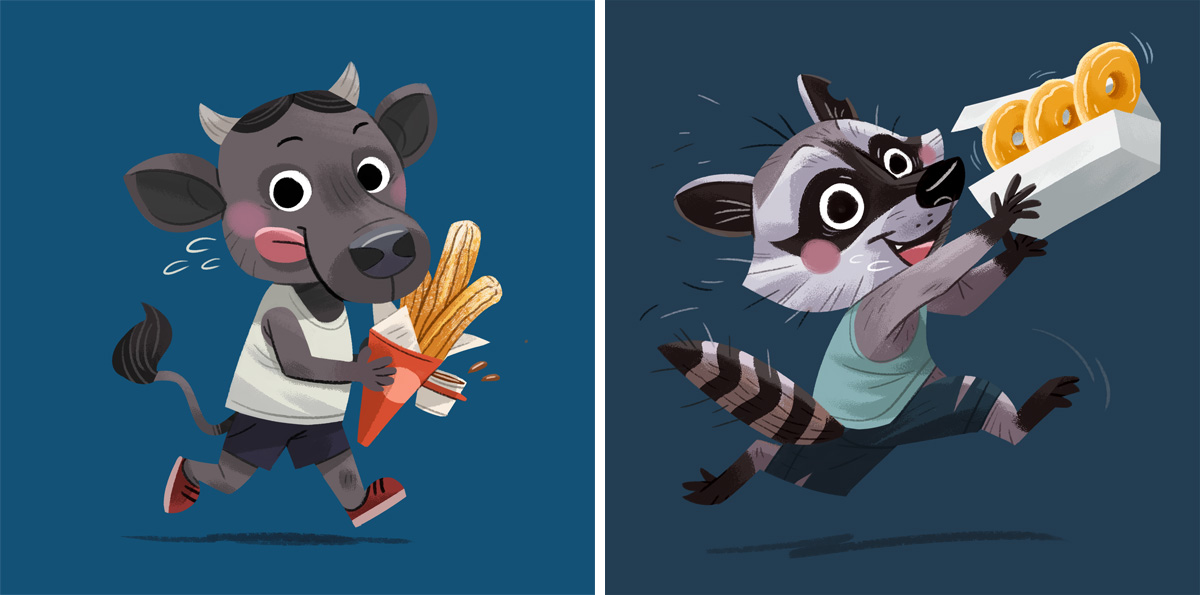
Sometimes these could be developed further for a personal project, like the ‘Foodie Critters’ series that I worked on a while back, and want to revisit. It was a fun exercise for me to write short descriptions of these characters. Especially since I would love to write and illustrate my own picture book in the future.
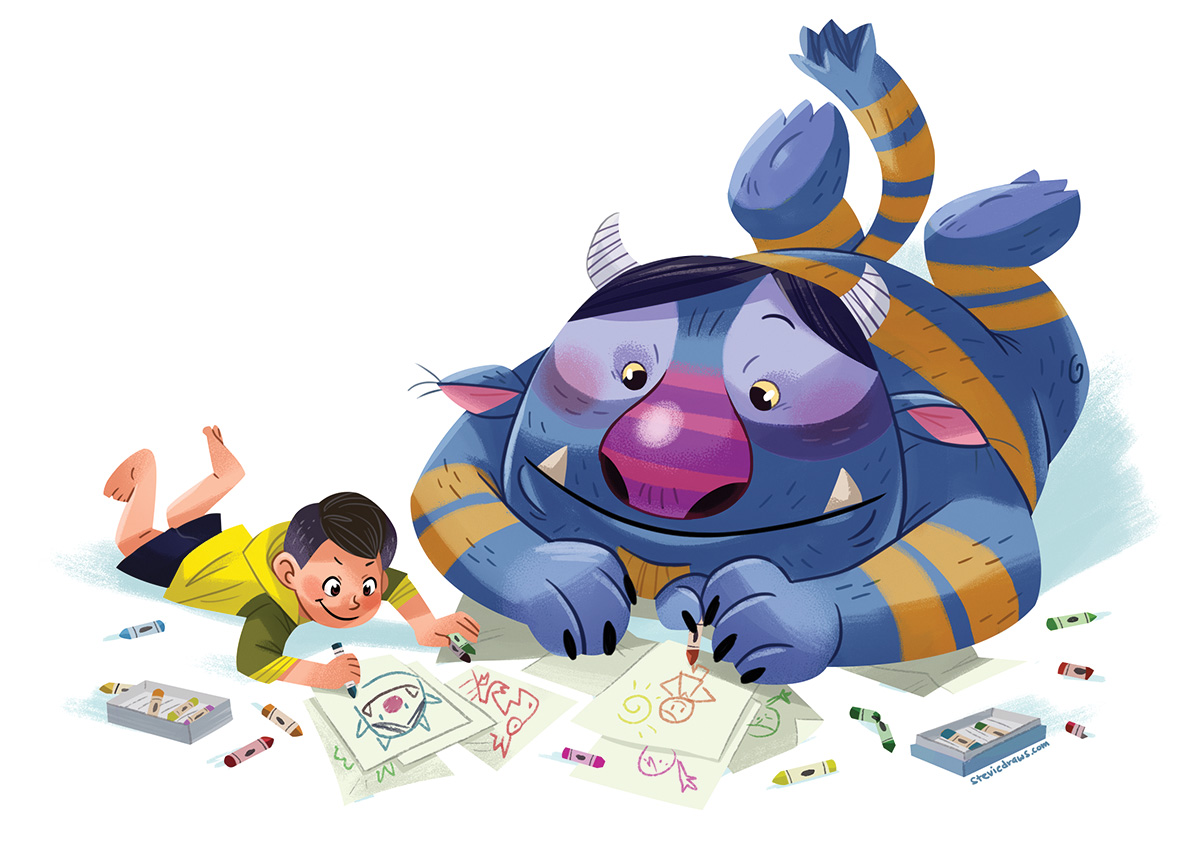
Stevie Mahardhika
Born in Indonesia, Stevie moved to New Zealand to study graphic design and has lived here ever since. He relishes the opportunity to draw children’s books with lots of animal characters whenever he can. He also likes to draw dogs, as he wants to adopt one (or two) in the future.



